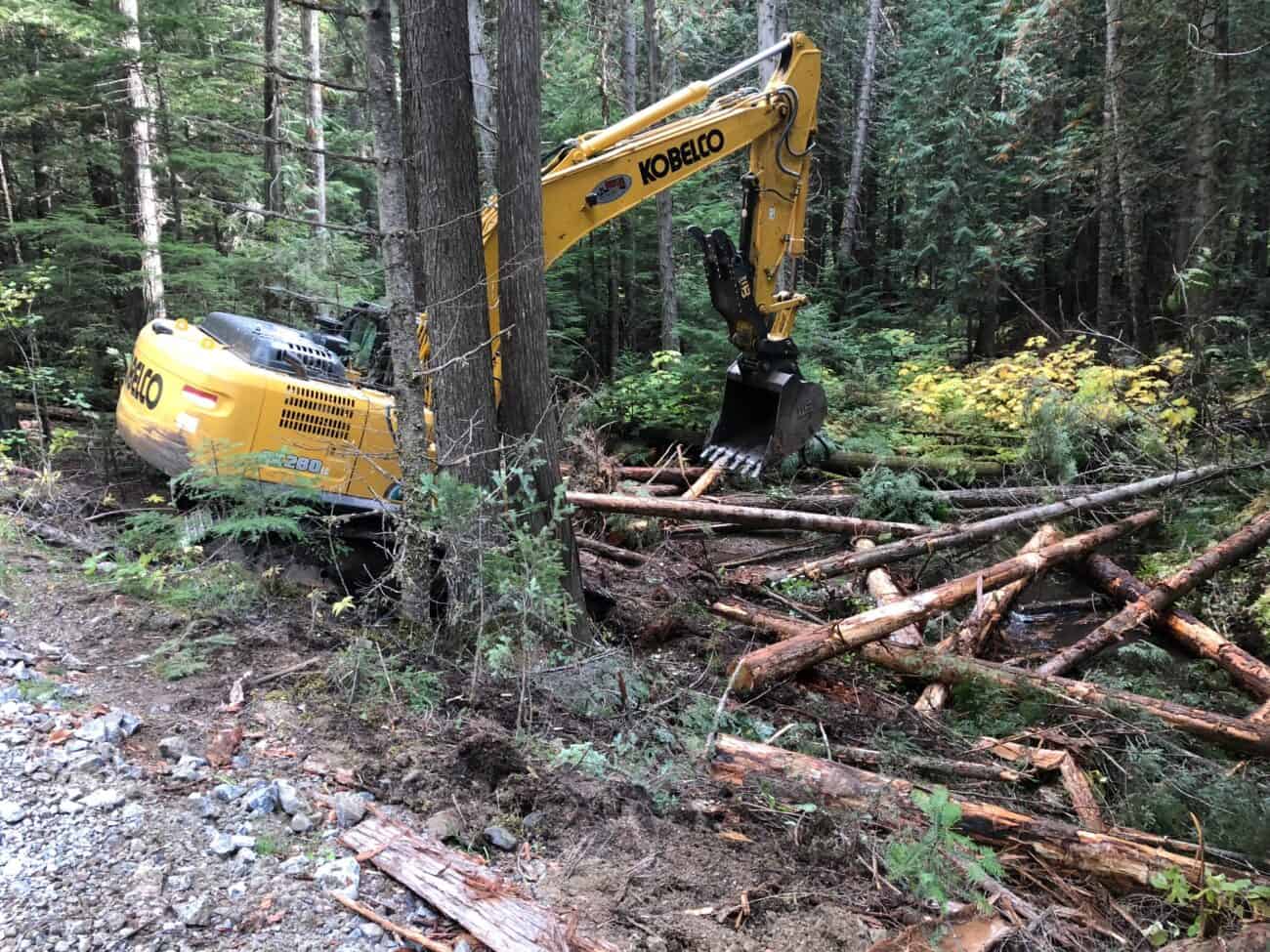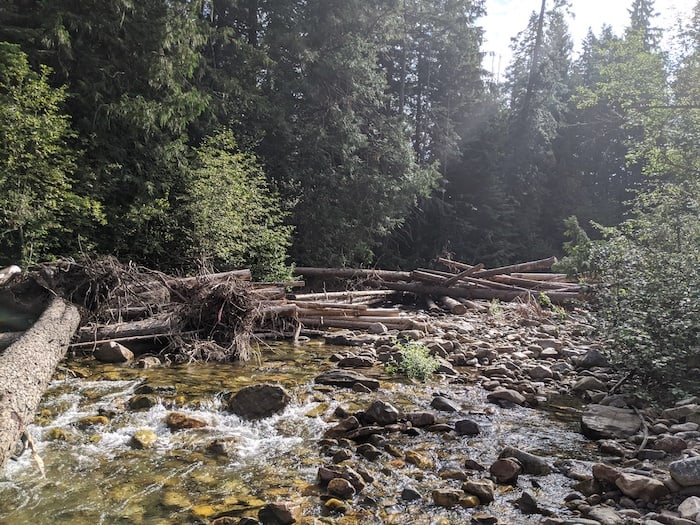Natural Systems Design was contracted by Seattle City Light to restore instream habitat within Sullivan Creek, the largest tributary to the Pend Oreille River above the Boundary Hydroelectric Project. FERC License requirements stipulated that Seattle City Light (City Light) place large wood in Sullivan Creek to improve habitat for native fish and restore impacts from past land use practices.
NSD led efforts to assess, plan, and design the most effective ways to place over 2,000 pieces of large wood in Sullivan Creek. To meet FERC documentation requirements, NSD prepared a Conceptual Implementation Plan to identify and assess restoration opportunities and options that have high potential for restoring geomorphic and ecological function. In particular, Sullivan Creek has incised, reducing or eliminating floodplain connection and off-channel habitats. It has also focused stream power within the mainstem resulting in a coarse, featureless channel bed that is too coarse for westslope cutthroat, a target species. NSD’s site data collection and geomorphic analysis focused on identifying impaired physical processes to determine where wood placements had the most potential to improve a full suite of ecological processes. It focused on reducing stream power to promote aggradation which will reconnect floodplains and reduce the typical bed material size in the mainstem.
FERC requirements included specific wood loading targets that were evenly distributed throughout 15 miles of Sullivan Creek. Through geomorphic analysis, NSD was able to show that focusing wood loading in reaches with more potential for aggradation would be most effective. Our analysis allowed City Light to refine that license requirement, focusing the work where it would count.
The Sullivan Creek watershed is recovering from a history of logging and resource extraction, with good recovery of the lowland western Red Cedar forest. The project occurs within the Colville National Forest, so it needed to comply with Riparian Management Zones. To implement the projects, NSD and City Light used three different wood placement techniques: 1) using ground based equipment where there were existing old roads, 2) helicopter where access is challenging and the riparian area is developing, and 3) riparian tipping where the creek is within 500 feet of the road and the riparian area is overstocked.
For the large wood installation in upper Sullivan Creek, NSD completed construction of machine built jams in 2018, Phase 2 with helicopter wood placements in 2019, and Phase 3 with riparian tipping was completed in 2020.




